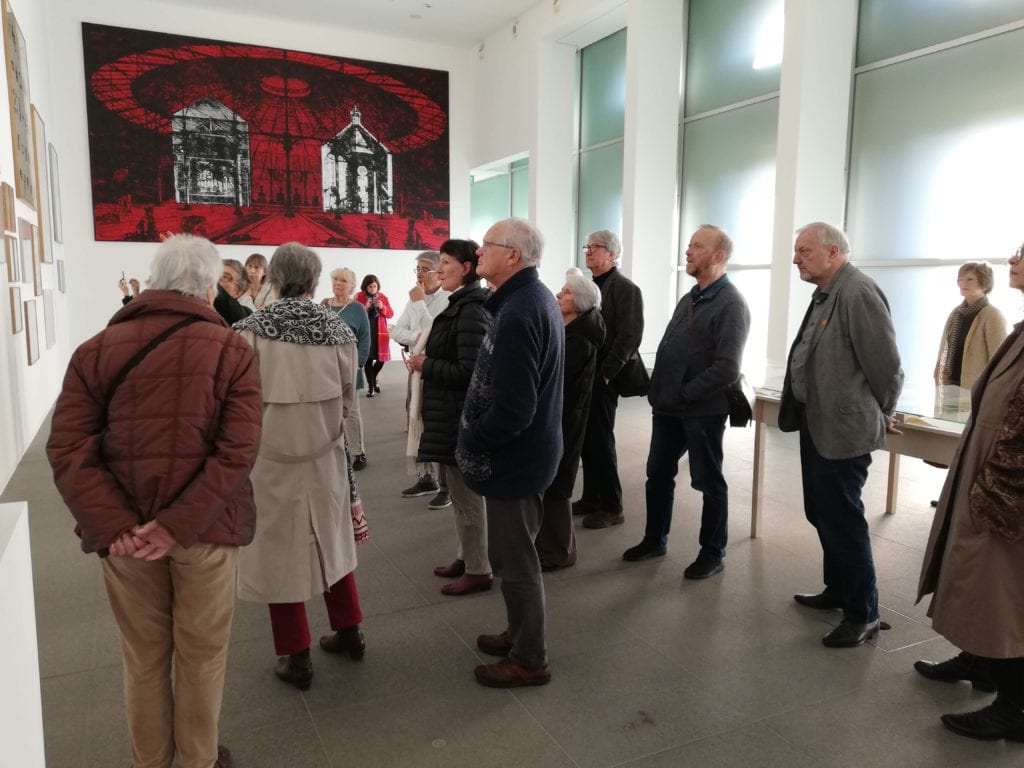Promotors op bezoek in het MAC’s
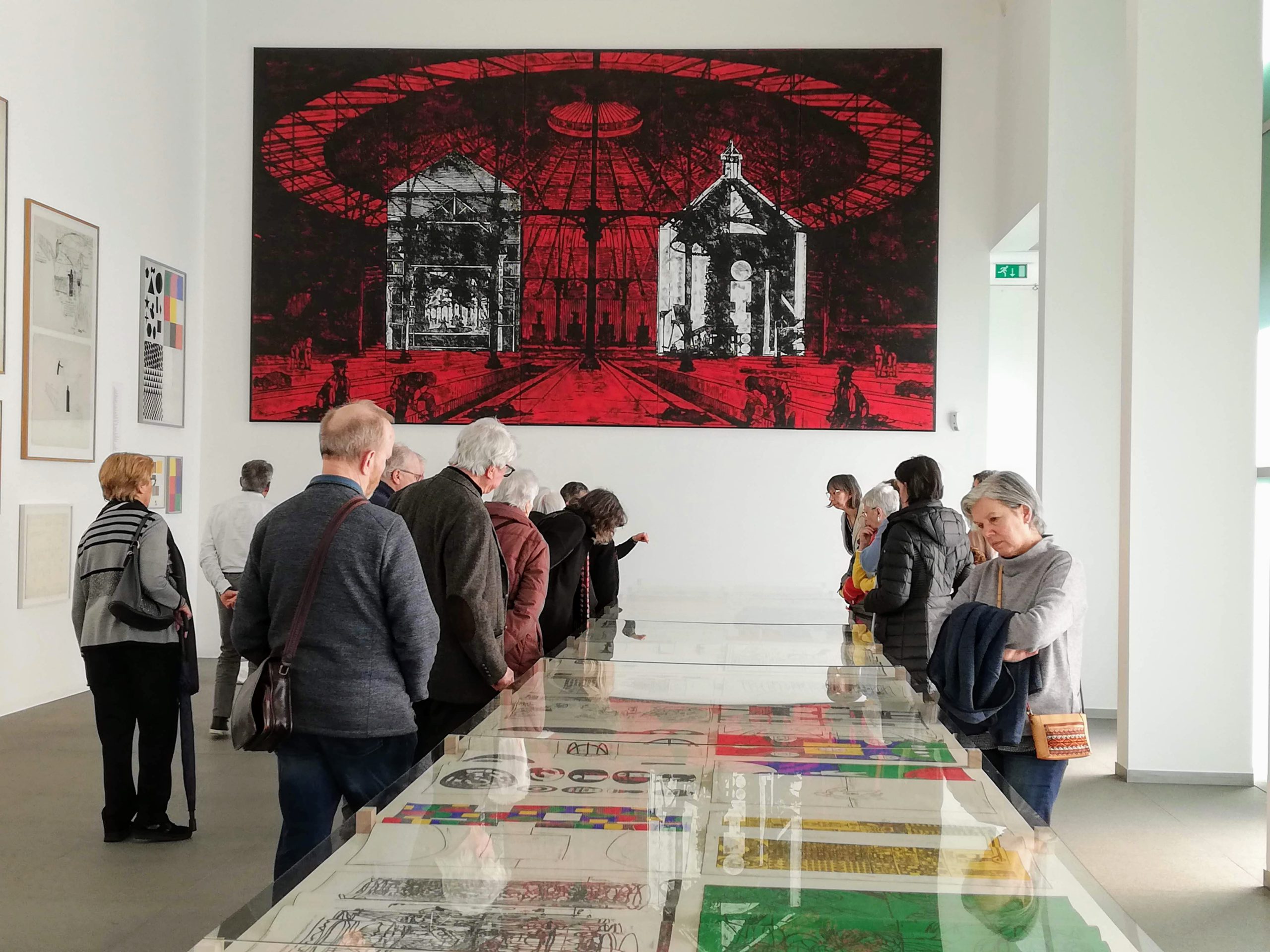
MAT MULLICAN in onze onmiddellijke omgeving
MIDDELHEIMMUSEUM
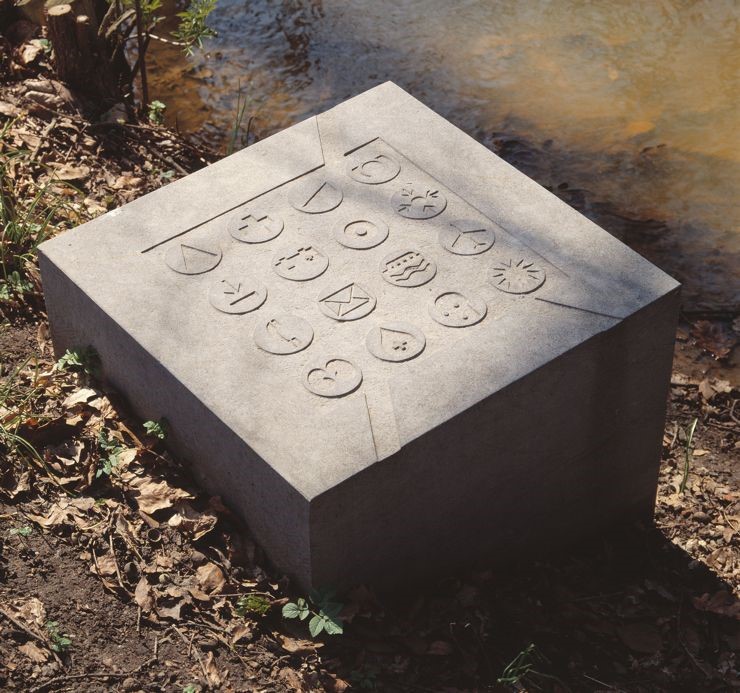
Zonder titel, 1993
Mullican probeert met pictogrammen greep te krijgen op de werkelijkheid.
Het werk van Matt Mullican zaait zich uit op vier verschillende plekken langs de waterloop. Mullican legt een bloembak aan en laat pictogrammen graveren in Soigniessteen. Sommige tekens ontwierp hij zelf, andere pikte hij op in stations, luchthavens en musea.
Op een van de lange stenen aan het houten bruggetje staat het grondplan van Middelheim-Laag, het terrein dat in gebruik werd genomen tijdens de tentoonstelling ‘Nieuwe Beelden’ in 1993. Met pictogrammen probeert de mens greep te krijgen op de werkelijkheid. Ze wijzen de weg, maken de maatschappij makkelijker beheersbaar. Ze liggen ook aan de basis van het schrift.
Matt Mullican ontwikkelde met zijn tekens een heuse kosmologie. Of liever de voorstelling van een kosmologie. Alles krijgt zijn plek in Mullicans tekensysteem: van de ongevormde materie, over de door mensen geordende wereld, kunst en taal, tot en met het spirituele. Toch komt ook Mullican niet dichter bij de wereld of een of andere waarheid. Integendeel, Mullican benadrukt net het beeldende karakter van zijn pictogrammen. Hij gaat na hoe verschillende dragers de impact van een teken veranderen.
De Soigniessteen geeft de tekens meteen een heel ander gewicht dan de vluchtige ontwerpschetsen op papier. Ook de ruimere context beïnvloedt de interpretatie. De context van het park maakt Mullicans beelden groter en significanter. Omgekeerd worden het aangrenzende water en de brug beladen met betekenis. Zeggen de tekens iets over de omgeving? Tot sluitende interpretaties komt het in elk geval niet.
DE SINGEL
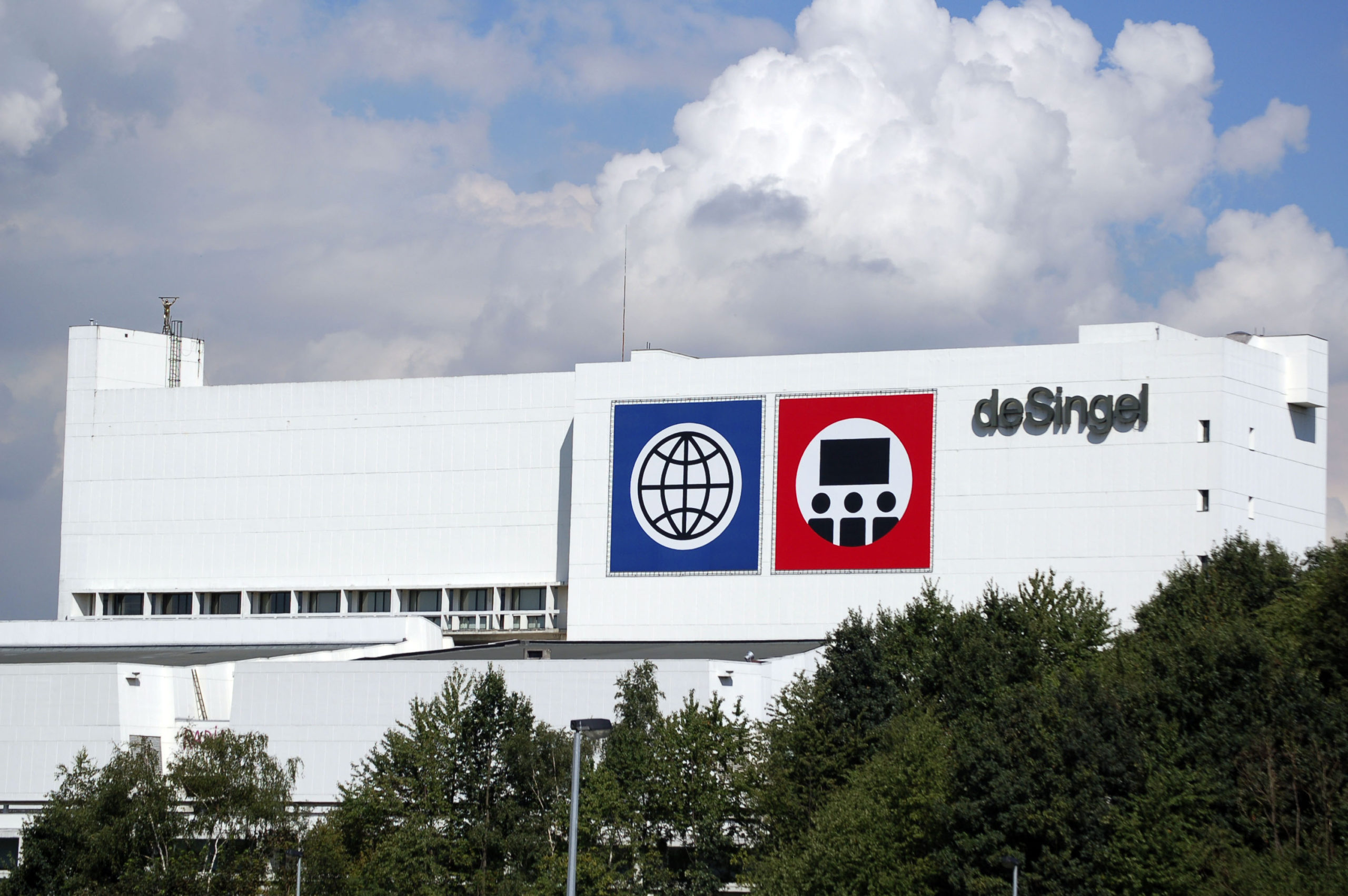
deSingel, augustus 2007, The highway is the audience, 2004, twee banieren op de gevel aan de ring R1 1000 x 1000 cm (elk)
‘Vlaggen zeggen wat er gebeurt: het publiek een internationale selectie van muziek, dans, theater en architectuur tonen’
Op de grote witte achterwand van deSingel hangen twee vlaggen. Een blauwe en een rode, van tien meter bij tien. Ze zijn zichtbaar van op de drukste verkeersader van België, de R1 rond Antwerpen. De wereldbol staat voor ‘internationaal’, de drie mannetjes (het publiek) en een rechthoek (een podium) staan voor ‘kunstencentrum’. We lezen ‘internationaal kunstencentrum deSingel’. Beide vlaggen, donderdag onthuld, zijn ontworpen door een van de voornaamste kunstenaars van onze tijd. Ogenschijnlijke eenvoud siert de kunst van de Amerikaan Matt Mullican.
Om deze Matt Mullican beter te leren kennen, gaan we naar …
Le Grand-Hornu
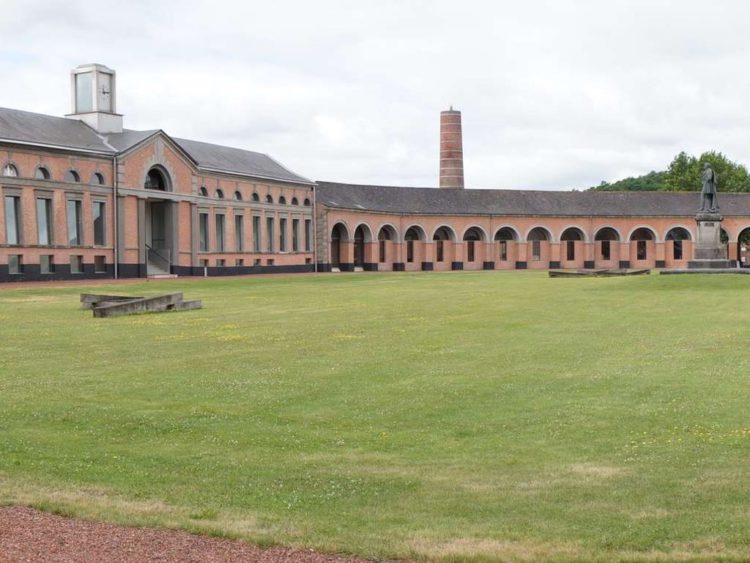
Le Grand-Hornu is een historisch industrieel mijnbouwcomplex in de Borinage ten zuidwesten van Bergen in de provincie Henegouwen. Het ligt in de gemeente Boussu bij de plaats Hornu. De site is een belangrijk voorbeeld van industrieel erfgoed van de industriële revolutie en een vroeg voorbeeld van functionele stedenbouw bij het begin van de 19e eeuw. Henri De Gorge (12 februari 1774 – 22 augustus 1832) bouwde de stadswijk, de werkplaatsen, de kantoren en zijn residentwoning “Kasteel De Gorge” tussen 1810 en 1830. De neoklassieke stijl gebruikt booggewelven, geveldriehoeken en halfronde vensters. In 2010 vierde men het 200-jarig jubileum en hoopte men erkenning als werelderfgoed door de UNESCO. In 2012 werd de site samen met 3 andere als de belangrijkste mijnsites van Wallonië voorgedragen als werelderfgoed aan de UNESCO tijdens de 36e sessie van de Commissie voor het Werelderfgoed. De 4 sites kregen positief advies en zijn op de werelderfgoedlijst geplaatst.
Het MACS, gevestigd in een van de gebouwen van de site, presenteert de eerste museale tentoonstelling in België van de Amerikaanse kunstenaar Matt Mullican. Deze retrospectieve, zoals de titel Representing the Work suggereert, is opgebouwd uit de voornaamste onderdelen van zijn œuvre van de afgelopen 40 jaar. Het overzicht vertrekt van de allereerste pictogrammen van de kunstenaar en gaat via zijn performances onder hypnose en zijn kosmologische diagrammen tot zijn befaamde frottages en vlaggen. Met meer dan 1000 beelden, gehaald uit encyclopedieën of van het internet of gemaakt door de kunstenaar zelf, is de tentoonstelling een unieke gelegenheid om ondergedompeld te worden in het obsessieve en eigenaardige universum, dat soms dicht lijkt aan te leunen bij art brut, van een van de belangrijkste vertegenwoordigers van de ‘Pictures Generation’.
__________________________________________________________________
MATT MULLICAN IN MAC’S
Op zoek naar een rustpunt
Na enkele uitgepuurde tentoonstellingen gaat het MAC’s nu voor een vloedgolf aan werken van de Amerikaanse kunstenaar Matt Mullican. Wie de golf pakt, ziet straf werk in een weelderige expo. INES MINTEN,FOTO’S PHILIPPE DE GOBERT
INES MINTEN, De Standaard 20 februari 2020
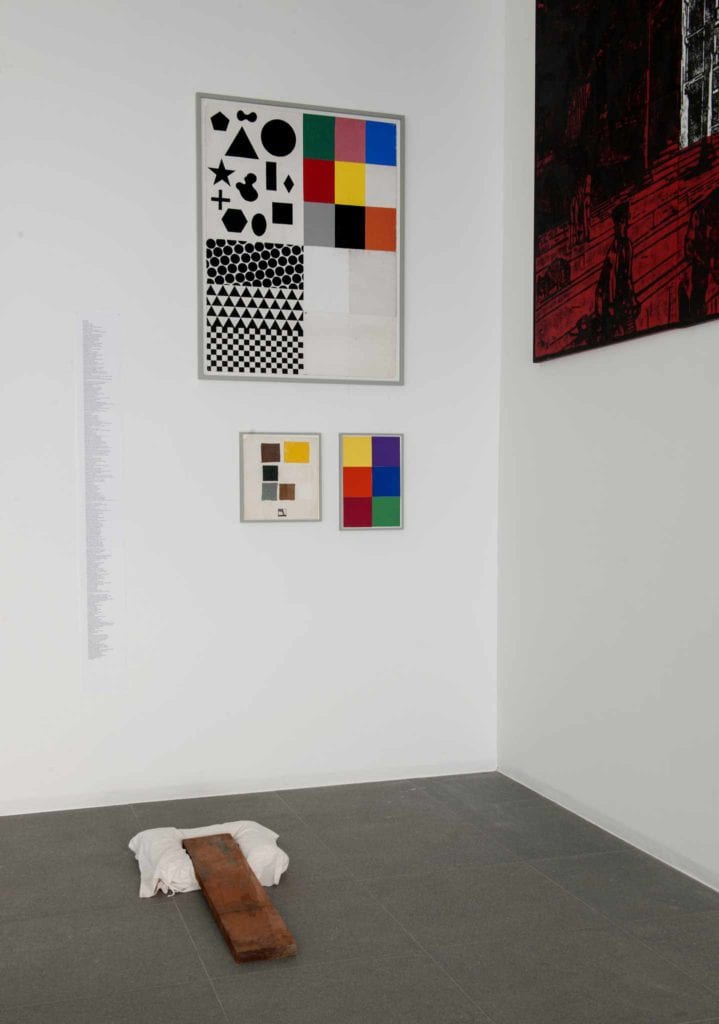
Wanneer Matt Mullican praat, is hij nauwelijks te stoppen. Hij vertelt gepassioneerd over zijn werk, en steeds met afgewende blik. Als hij zijn publiek niet aankijkt, kan hij zich beter concentreren op wat hij onder woorden wil brengen. ‘Zoals een gitarist op een podium’, vindt hij. ‘Ik kan zo nog rustig drie uur doorgaan.’ Op dezelfde overvloedige manier biedt hij zijn beeldend werk aan. ‘Het is mijn bedoeling om het hele volume te tonen.’
Representing the work is een complete onderdompeling in het oeuvre, een retrospectieve die moeiteloos drie extra zalen had kunnen vullen.
Matt Mullican woont in New York en Berlijn. Hij nam deel aan de Biënnale van Venetië en verscheidene keren aan Documenta. Twee jaar geleden had hij een enorme retrospectieve in Milaan. MAC’s brengt zijn eerste Belgische museumtentoonstelling.
Begin jaren 70 studeerde Mullican bij John Baldessari in LA, een tijd waarin het conceptualisme en formalisme hun hoogtepunt hadden bereikt. ‘Voor onze generatie bleef er niets over. Wat moesten wij nog doen?’ Hij vond zijn antwoord in het onderbewuste. ‘Beelden zijn niet fysiek, maar mentaal. Elk beeld ontstaat in het hoofd van de toeschouwer, of het nu gaat om een film, de Sixtijnse Kapel of wat je ziet op je smartphone.’ In zijn performances onder hypnose drijft hij dat principe ver door. ‘Ik heb geen enkel idee wat ik zal doen als ik onder hypnose ben’, legt hij uit bij de video-installatie in MAC’s. Daar toont hij fragmenten van de performances op ouderwetse schermen. ‘Het is alsof je een gek bezig ziet, niet?’
‘Wat doe je in het leven?’

De sobere laatste zaal zorgt voor opluchting in een overweldigende expositie.
Zijn beelden haalt hij overal. Van plaatjes van bloemen over stokfiguren tot pornografie, Mullican gebruikt al wat hem goed dunkt. Hij verzamelt, fotografeert, tekent en catalogiseert alles in vijf groepen met een eigen kleur: groen is natuur, blauw het dagelijks leven, geel de kunst, zwart de taal en rood is subjectiviteit. Naast werken op canvas en papier maakt hij vlaggen, boeken, glaswerken, installaties, video’s. ‘Ik heb de vraag “wat doe je in het leven?” altijd moeilijk gevonden’, zegt hij. ‘Vooral als ze gevolgd wordt door: “En wat voor kunst maak je dan?” Tegenwoordig antwoord ik: “Ik ben een conceptueel georiënteerde multimedia- en installatiekunstenaar.’
Alles in één kist
Halverwege de expo deelt Mullican een langwerpige ruimte nog eens in twee gangen in. Aan houten frames hangt hij zijn nomadische tentoonstelling: een veelheid van werken, die meestal ook weer zijn samengesteld uit verscheidene beelden, bevestigt hij aan 64 witte lakens. Opgevouwen kan de hele tentoonstelling in een kist. Losjes uitgehangen vat ze de essentie van zijn kunst. Het is een schitterend concept, die tentoonstelling-in-een-kist. Ze kan op zich staan, maar in MAC’s presenteert hij ze erg compact als slechts één onderdeel van het geheel. Tussen de vloeiende muren-van-lakens staan nog vitrinetafels met kleine werken. In diezelfde ruimte hangt een reeks grote werken met geel als dominante kleur. Elk werk bestaat nog eens uit acht kleinere in eenzelfde thema. Voor één ervan googelde de kunstenaar het woord ‘droom’, voor andere ‘leven’ of ‘kus’. Er is er één dat abstract aandoet, maar dat ontstond uit foto’s die hij met zijn smartphone nam van zijn frisdrank, bijvoorbeeld door een rietje. Ook die werken intrigeren, maar zouden beter tot hun recht komen als ze wat meer ruimte kregen. Mullican benut elke beschikbare vierkante meter van het MAC’s, de zalen puilen uit. De bezoeker krijgt dus wat voor zijn geld, kun je zeggen, maar na enkele zalen snak je naar wat visuele rust.
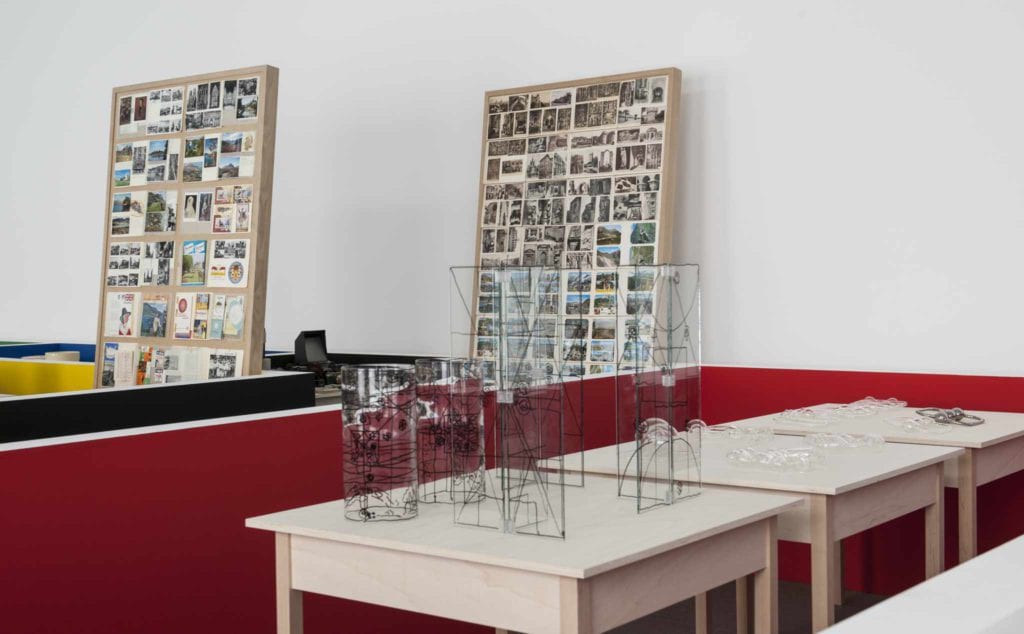
Mullican verzamelt, tekent, fotografeert en catalogiseert alles in vijf groepen met een eigen kleur.
Indrukwekkend orgelpunt
De opluchting volgt in de laatste zaal. Mullican plaatst grote canvassen rand tegen rand op de muur en de vloer. Het zijn zogenaamde rubbings: hij legt kartonnen figuren onder het canvas en zet die erop over door er met oliekrijt over te wrijven. ‘Het is een oeroude reproductietechniek.’ Hoewel de kunstenaar hier evenzeer de hele oppervlakte benut, zorgt het zwart-wit in die lichte ruimte voor een zekere soberheid: een indrukwekkend en welkom orgelpunt van een overweldigende tentoonstelling.
__________________________________________________________________
MATT MULLICAN
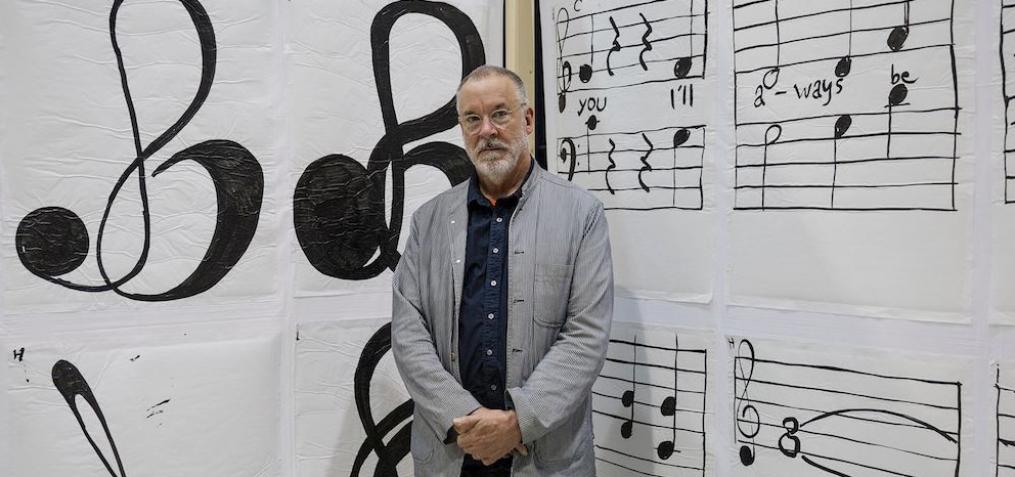
Matt Mullican (geboren 18 september 1951 in Santa Monica , Californië) is een Amerikaans-Venezolaanse kunstenaar en zoon van kunstenaars Lee Mullican en Luchita Hurtado. Mullican ontving zijn BFA van CalArts in 1974, en nam tot bekendheid als lid van de “Pictures Generation”, samen met artiesten als Troy Brauntuch , Jack Goldstein , David Salle , James Welling , Sherrie Levine , Cindy Sherman , Louise Lawler , Richard Prince en Robert Longo . Zijn werk houdt zich bezig met de systemen van kennis, betekenis, taal en betekenis. Mullican werkt ook met de relatie tussen perceptie en werkelijkheid, tussen het vermogen om iets te zien en de mogelijkheid om haar te vertegenwoordigen.
Werk van Mullican is nationaal en internationaal tentoongesteld sinds de vroege jaren 1970 op locaties, waaronder het Metropolitan Museum of Art , New York, Haus der Kunst , München, Duitsland, de Nationale Galerie, Berlijn , Duitsland, het Stedelijk Museum , Schiedam , Nederland , Museum of hedendaagse kunst , Los Angeles, CA, en het Museum of Modern Art , New York.
Mullican heeft onderwezen en doceerde aan de Universiteit van Columbia , de School of Visual Arts , New York, de Rijksakademie , Amsterdam, The London Institute , Chelsea College of Art and Design , Engeland en Hochschule für Bildende Künste Hamburg , Duitsland onder verscheidene anderen.
Matt Mullican is tentoongesteld in 2017 op het Petit Palais’ gevel in Parijs tijdens de FIAC met zijn gigantische kunstwerk ‘Voor Worlds Between Five’.
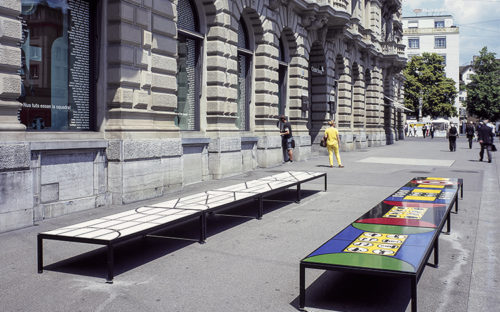
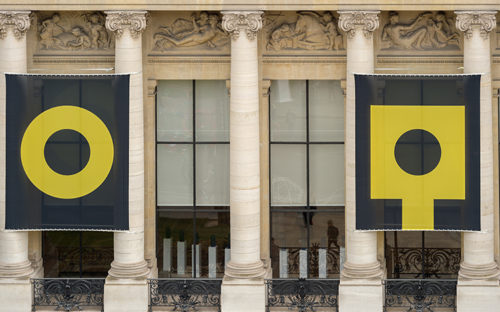
Fiac 2017, Petit Pälais, Paris
Mullican wordt vertegenwoordigd door Brooke Alexander Gallery, Peter Freeman, Inc. en Tracy Williams, LTD., Manhattan , Mai 36 Galerie, Zürich , Galerie Johann Widauer, Innsbruck en Galerie Nelson, Parijs. Matt Mullican wordt beschouwd als een van de pioniers van mediakunst en maakt deel uit van de ‘Pictures Generation’. Sinds 1973 heeft Matt Mullican talrijke solotentoonstellingen gehad over de hele wereld, zowel in musea als in galeries. Hij nam ook deel aan Documenta 7, 9 en 10 in respectievelijk 1982, 1992 en 1997.
In 2019 stelde hij tentoon bij NC-arte in Bogota, en in 2018 palmde hij de immense ruimte van HangarBiccoca in Milaan in. In 2010 confronteerde de tentoonstelling 12 by 2 in het IAC in Villeurbanne de werken van Matt Mullican met die van ‘That Person’, het alter ego dat tot leven wordt gewekt wanneer Matt Mullican onder hypnose is. In 2005 liep in het Museum Ludwig in Keulen de solotentoonstelling Learning from That Person’s Work, met werken die gemaakt zijn door ‘That Person’.
Zijn werk is opgenomen in talrijke internationale publieke en privécollecties, zoals het MoMA in New York, Tate Modern in Londen, het Stedelijk Museum van Amsterdam, Haus der Kunst in Munchen, Centre Pompidou in Parijs en het MACS.
Het MAC’s presenteert de allereerste solotentoonstelling van Matt Mullican in een museum in België
Een selectie uit de tentoonstelling
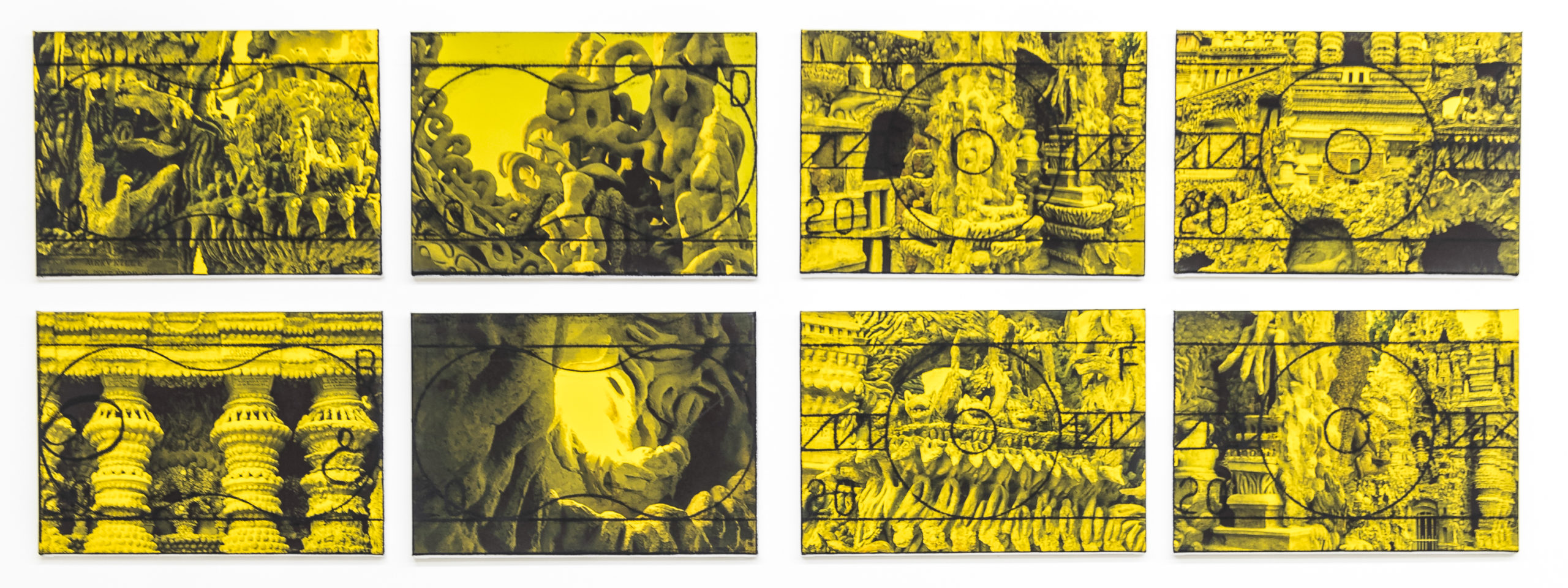
Untitled (Yellow Monster 20), 2017
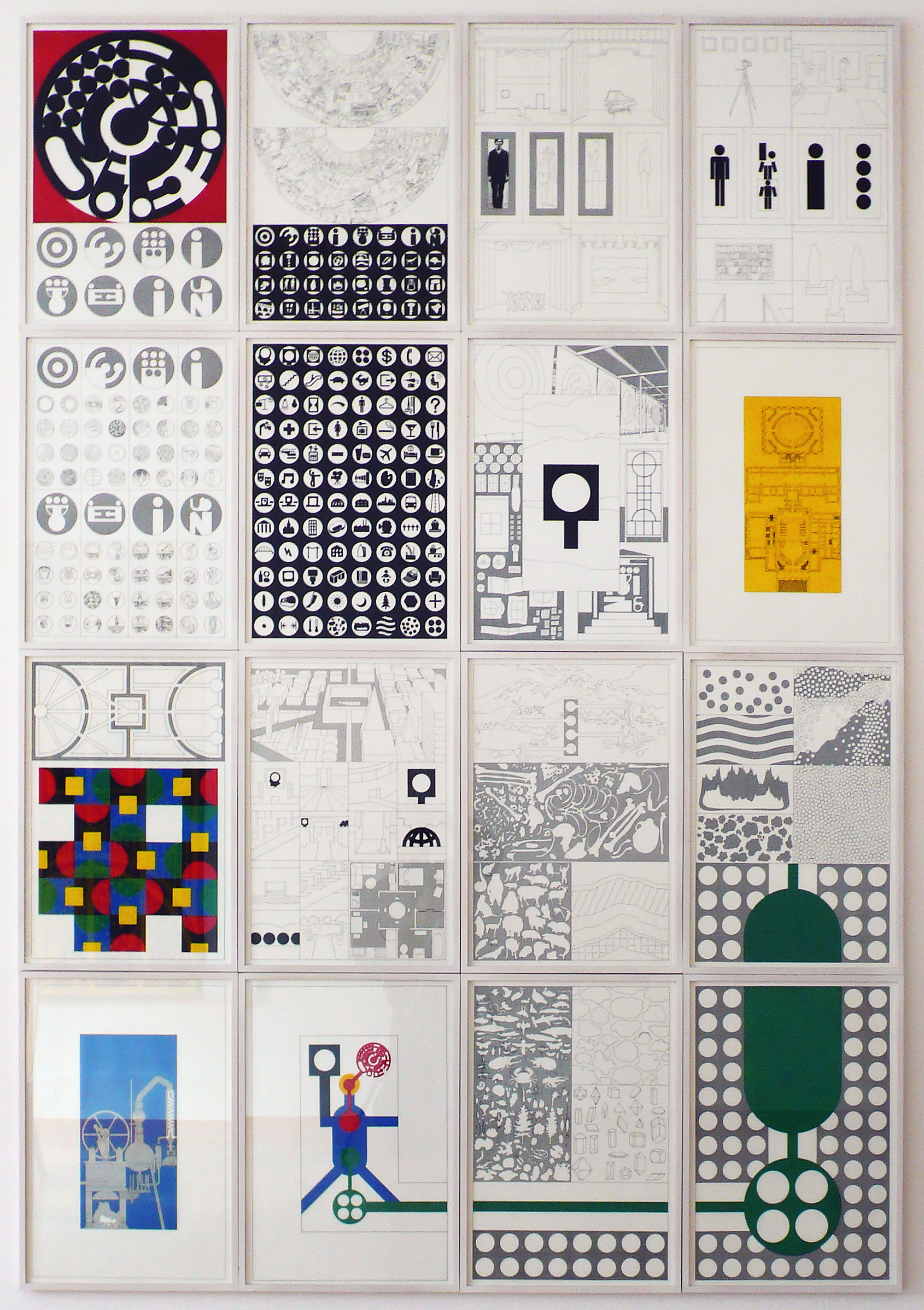
Untitled (Portfolio I, Solway), 1988
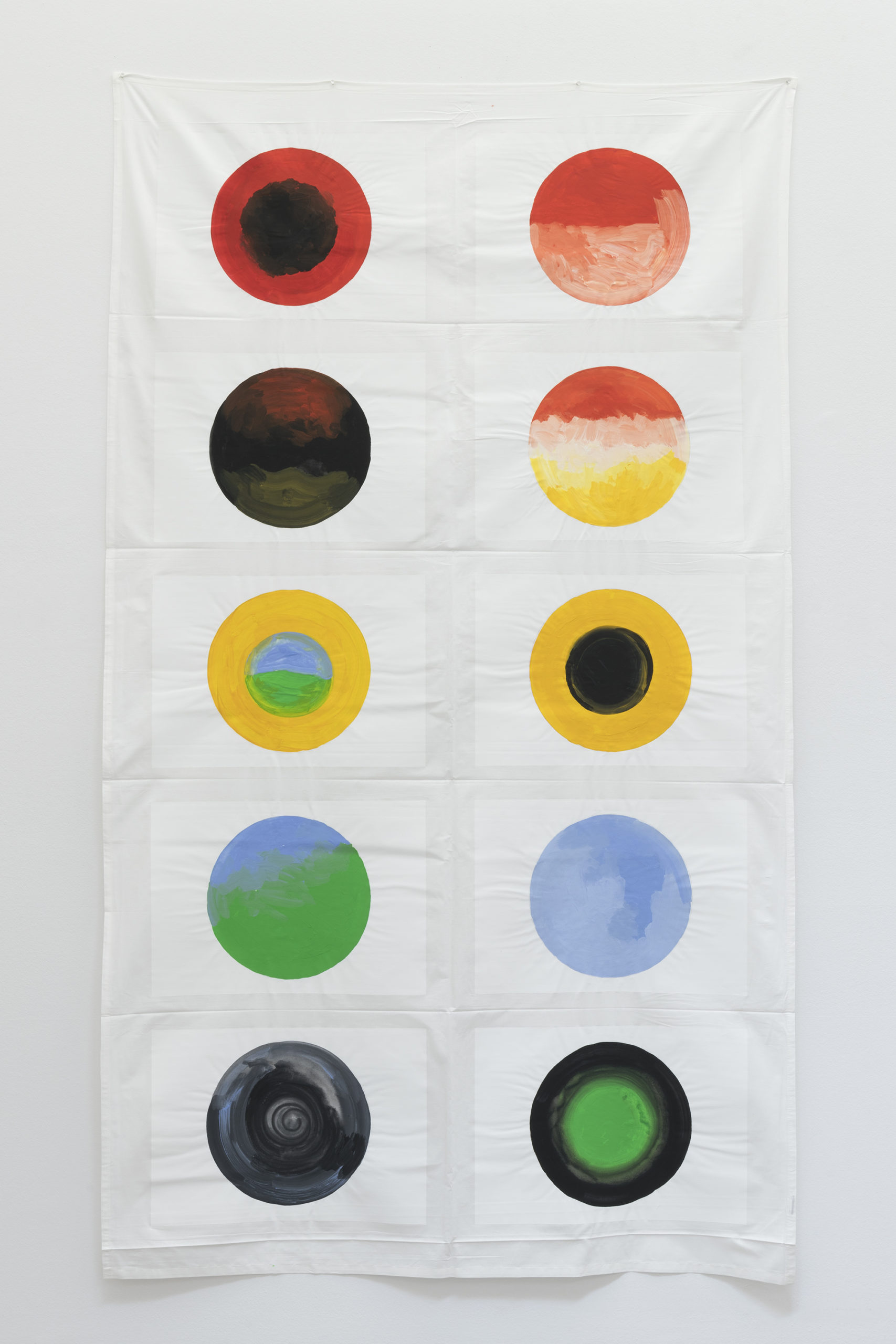
Matt Mullican_Representing the work_03Cortesía de NC-arte, credit photo Oscar Monsalve
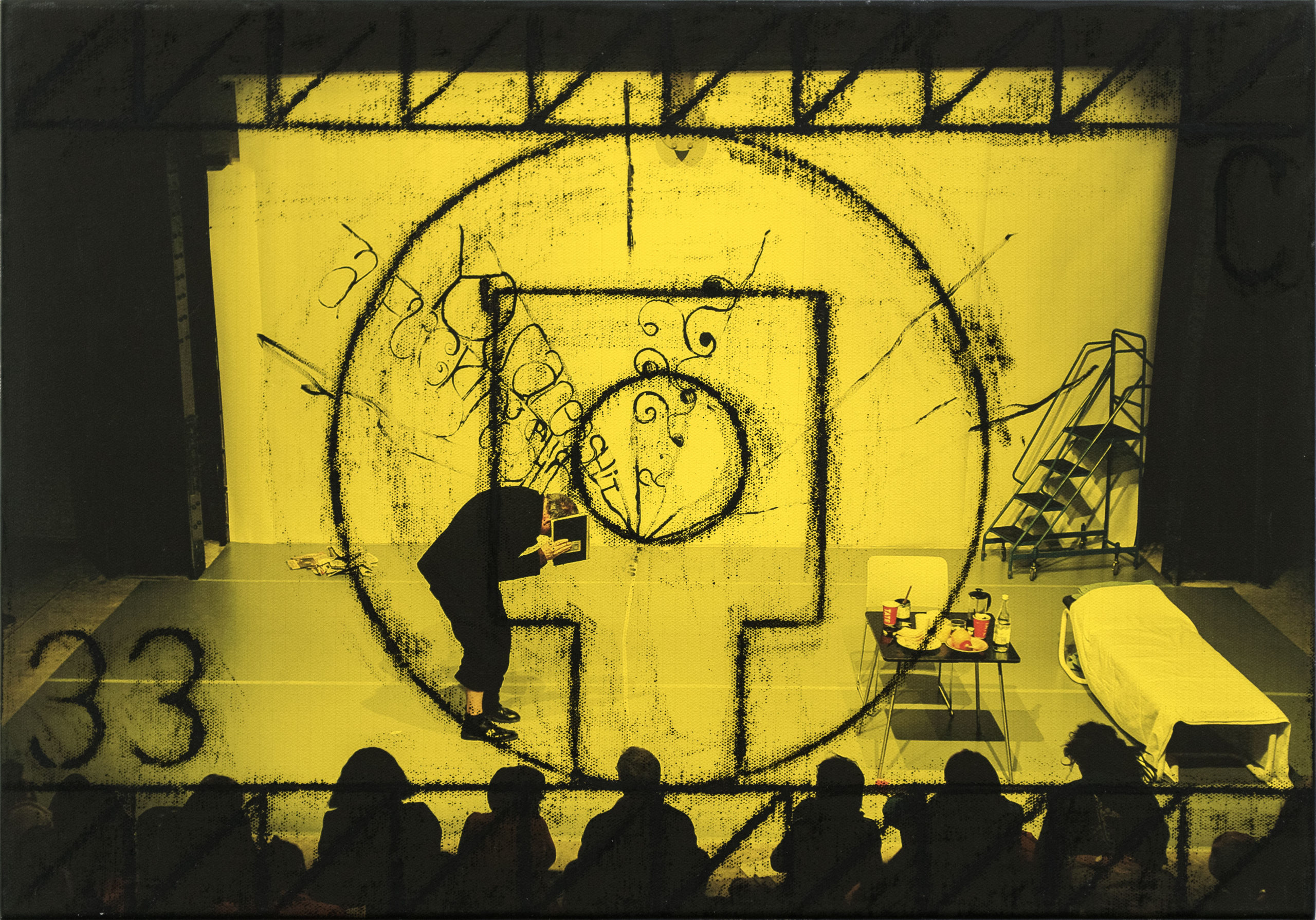
MM_Untitled (Performance-at-Tate) Photographer Roberto Ruiz Courtesy ProjecteSD
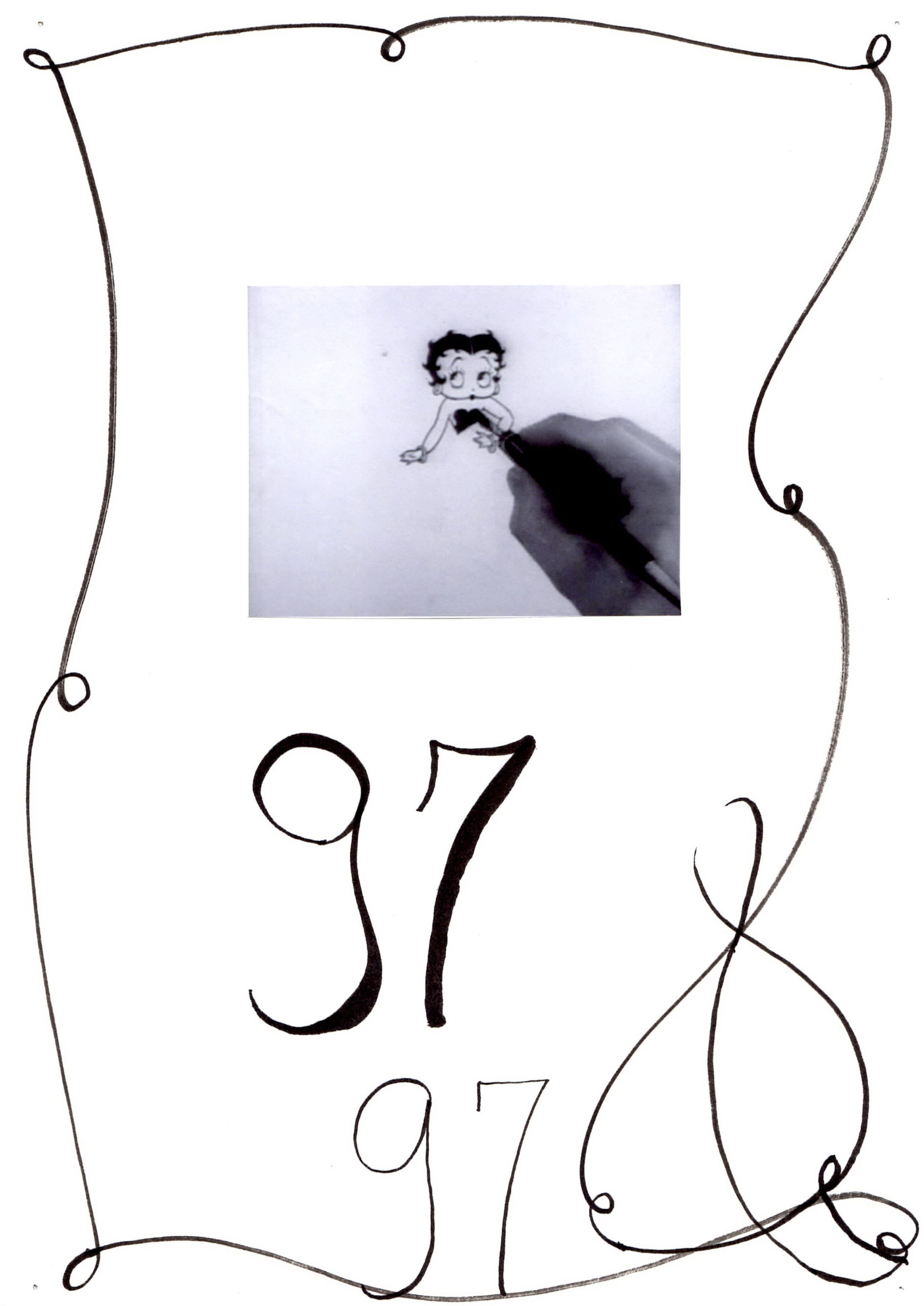
MM_Meaning of Things 097
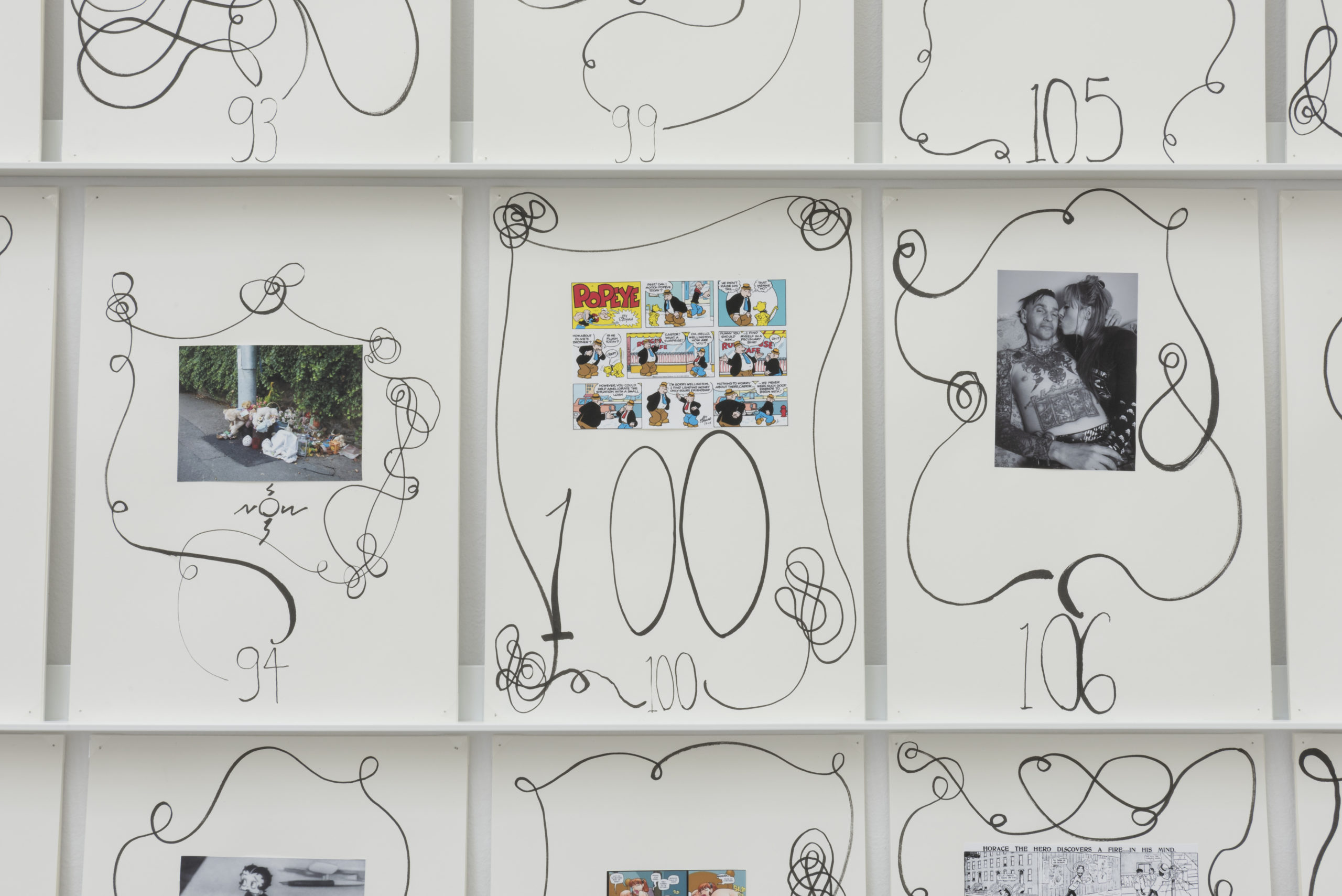
The Meaning of Things)_view ProjecteSD (2)

Matt Mullican_Representing the work_02_Cortesía de NC-arte, Oscar Monsalve
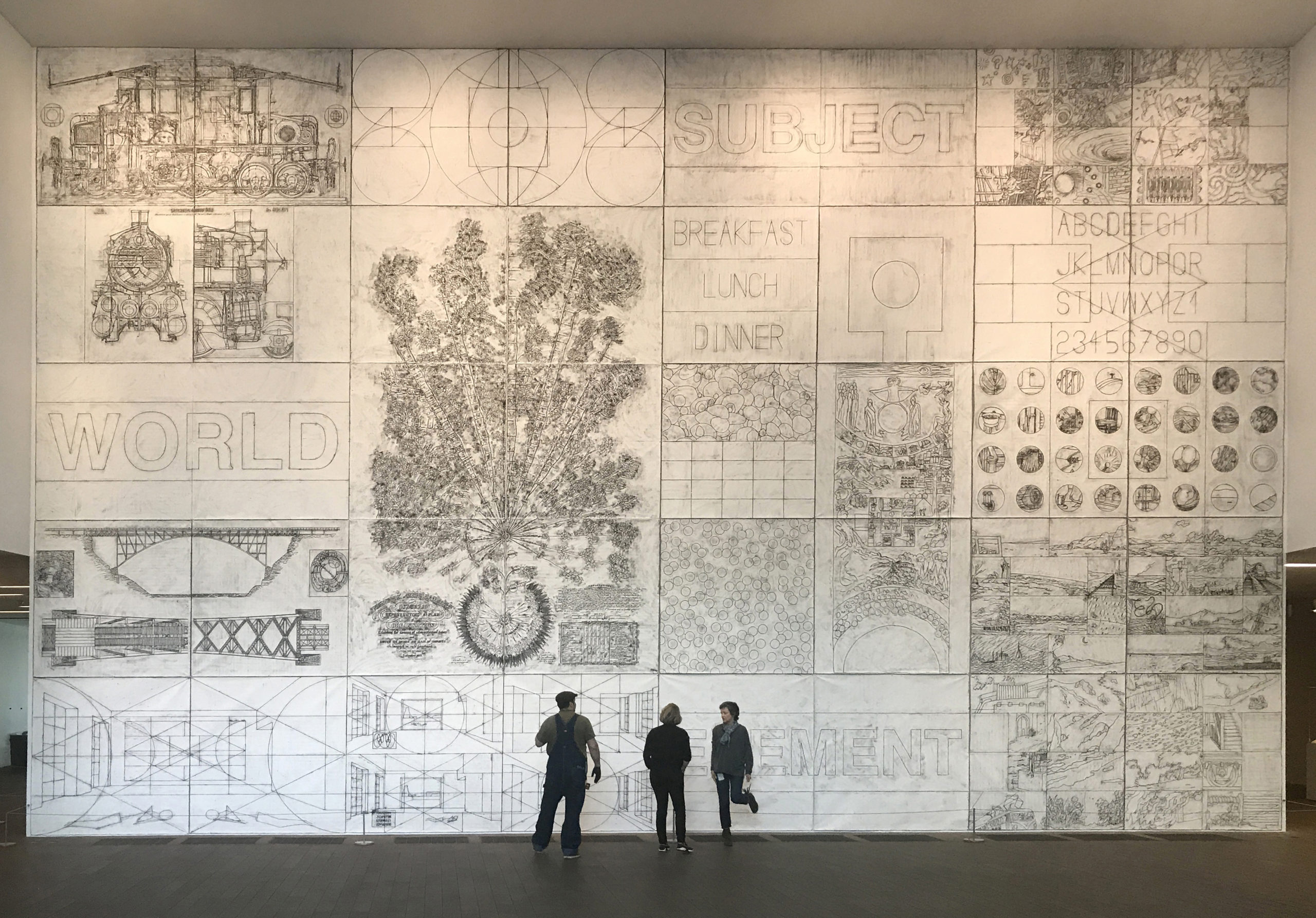
Matt Mullican, Living in That World, 2019 de Young Museum San Francisco
__________________________________________________________________
Matt Mullican on His ‘Cosmologies’ of Signs and Symbols, in 1989
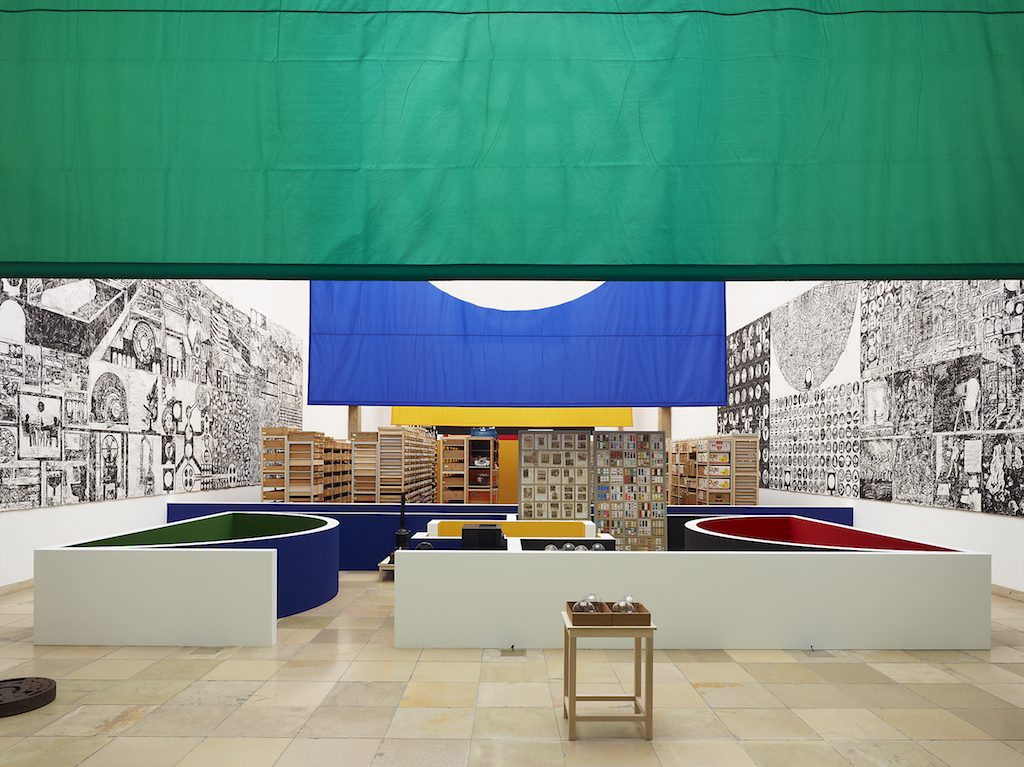
Installation view of “Matt Mullican: Organizing the World,” 2011, at Haus der Kunst, Munich.
Known for his vast installations and sculptures about signs, symbols, and the way they produce meaning in a world saturated with images, Matt Mullican is currently the subject of a retrospective at the Pirelli HangarBicocca museum in Milan. With that show in mind, republished below is Peter Clothier’s profile of Mullican, which first ran in the Summer 1989 issue of ARTnews. The article focuses on the artist as he readies a large-scale project that involved using computers to create networks of symbols. “I like that idea—an engine generating meaning,” Mullican told Clother. The article, reprinted with the permission of the author, follows in full below. —Alex Greenberger
“Sign Language”
By Peter Clothier
Summer 1989
For Matt Mullican the world is made up of signs with variable meanings. The “City”—his model of human knowledge and experience—is a sign of artistic maturity
‘I’m not very articulate today,” Matt Mullican apologizes over a hasty cup of coffee at a small café near the Museum of Contemporary Art in Los Angeles. The high rises of the still-developing Bunker Hill area loom above: labyrinthine steel and concrete corridors reach out into shadowy distances, recalling Mullican’s own mythic “City”—lately the focus of almost all his work. “I’m flying out on the red-eye,” he says, “back to New York. When I get back, I have an opening at Michael Klein, and another show opening in Lucerne, Switzerland, two weeks after that.”

Matt Mullican.
At 37 Mullican has established a restrained, solid reputation for work whose central image is the sign. His highly stylized, logolike notations, often enclosed in simple circles, range in reference from the familiar international airport and highway insignia for necessities like food and rest rooms to recurrent personal designs invoking such universal abstractions as subjectivities, God, and death. Deployed in forms as diverse as posters, banners, stained glass, stone, and rubbings on canvas, their insistent, enigmatic presence among other occupants of the world of signs seems to challenge interpretation even from the casual observer. And thanks to recent large-scale public projects, they are becoming as familiar on city streets throughout the United States and Europe as in such museums and private collections as the Metropolitan Museum of Art and the Frederick R. Weisman Foundation.
The artist’s larger public commissions can command up to $150,000. For all the seemingly cool hermeticism of his work, Mullican has developed a wide appeal, perhaps in part because of the quiet depth of his conviction and the visual directness of his statement in an art world that is often ironic, self-promoting, and shrill. Ned Rifkin, chief curator for exhibitions at the Hirshhorn Museum and Sculpture Garden in Washington, D.C., describes Mullican as “unique among his generation. Unlike some others who get into the whole business of the art-world positioning, he has a lot of soul, a lot of touch. He’s a highly ethical artist, very straight-ahead, yet very much wrapped up in what he’s doing. He’s constantly processing ideas.”

Matt Mullican, Untitled Details From a Fictional Reality, 1973. Museo Tamayo, Mexico City, 2013.
The description seems accurate when one meets the artist, who is soft-spoken and introspective yet disarmingly direct. Mullican works out of New York in a co-op loft in Little Italy and shares a SoHo apartment with his wife, Valerie Smith. (The former curator of Artists Space, she is currently embarked on a doctoral program in art history at City University of New York.) “Especially in the past four years or so, we’ve had no time for anything besides work,” he says. In L.A. for a weekend to work on plans for a complex supercomputer project, the results of which will be installed in the Museum of Modern Art’s Projects Room this summer, Mullican could grab only an hour to stop and talk about this and other current preoccupations, which have him traveling in a single month to Belgium, Ireland, Canada, Portugal, and Provincetown, Massachusetts, in addition to Switzerland.
This particular trip is homecoming as well as business for Mullican, who moved from southern California to New York in the early 1970s. Born in 1951, he was raised in Santa Monica, the son of two painter, Lee Mullican and his Venezuelan wife, Luchita Hurtado. Art was a governing factor in Mullican’s life from his earliest years. As a child he’d be given, along with the usual toys, rolls of butcher’s paper and black paint. “It’s no wonder that I hate to paint today,” he says, laughing good-naturedly. “I had enough painting with my parents. My God, I smelled oil all my life.” Not that he lacked aspirations. “I had to make my own person,” Mullican explains. “My last year in high school, I was already doing performances. I was doing conceptual work when I was twenty years old.”
At the beginning of the ’70s, California Institute of the Arts seemed like the obvious choice for a student of Mullican’s inclinations. A school that at the time was still in its own rebellious infancy, CalArts demanded only that its students think and act like artists. “It was like graduate school for undergraduates,” Mullican says. In a sink-or swim education environment, Mullican was a swimmer—along with such classmates as Jack Goldstein, Troy Brauntuch, David Salle, James Welling, and Ross Bleckner, and with the help of faculty like John Baldessari, whose teaching and example led a generation of students beyond the horizons of then-accepted art.
“I still have tremendous respect for the artist we learned from,” says Mullican. “People like Lawrence Weiner, Joseph Beuys, Bruce Nauman. But I felt that the more reductivist aspect of Conceptual art as a supposedly objective investigation had exhausted itself. Art had been defined objectively down to its essentials, and I wanted to deal not with the object so much as the subject—that is to say, what we bring to the object.” The work Mullican did as a CalArts student had to do with the way an object is perceived not as objective physical evidence in itself but by the light that it reflects. He would, for example, train a green light on an ordinary color cue card, “to show that color was not a constant. But then, if all I see is light patterns, where does meaning occur? Obviously, it exists within me.”
This notion led directly to the stick figures that populated Mullican’s early post-student work. The jump was a simple conceptual one: “Again, if what I see is light patterns, what’s the difference between a stick figure and an actual figure?” Drawing on the culture that surrounded him, he found ample confirmation that the stick figures whose lives he began to construct and, in performance, to narrate, were no less real than the fictional light constructs of, say, television. “I proposed that the stick figure lived in actual life. You could say I took the idea to an absurd length—and it felt like a good thing to do, given the state of the media, where people’s lives revolve around the fictional images of soap opera. I was just trying to find the level of the fictional image, which was subjective.”
Mullican first arrived in New York in 1973 on an exchange program between CalArts and Cooper Union. A young artist of freely admitted ambition surrounded by others equally hungry to make a mark, he took advantage of the city’s rapid response to new ideas, showing and performing through the end of the ’70s in artists’ collectives or alternative spaces like The Kitchen or Artists Space. Fellow artists, including David Salle, Ross Bleckner, and, above all, Allan McCollum, began to take note of Mullican’s ideas and write about them. “For Mullican,” wrote McCollum in 1980 Real Life Magazine article, “the world of art describes a ‘fictional’ reality. However, since he recognizes the anatomy of the ‘real’ world to be made up of signs and symbols, the world of art and the world of reality obtain a queasy interchangeability.”
Mullican explored this relationship in performance pieces like “The List” (1973), in which he created a kind of stick figure in words. In short, monotonous segments, Mullican read fragments of a narrative of a fictive woman’s life from a list pinned on the rear wall of the performance space. He sat with his back to the audience to emphasize the illusion of objective distance. But the identity of the subject was not static; the narrative was broad enough that “she” could be anyone, including Mullican.
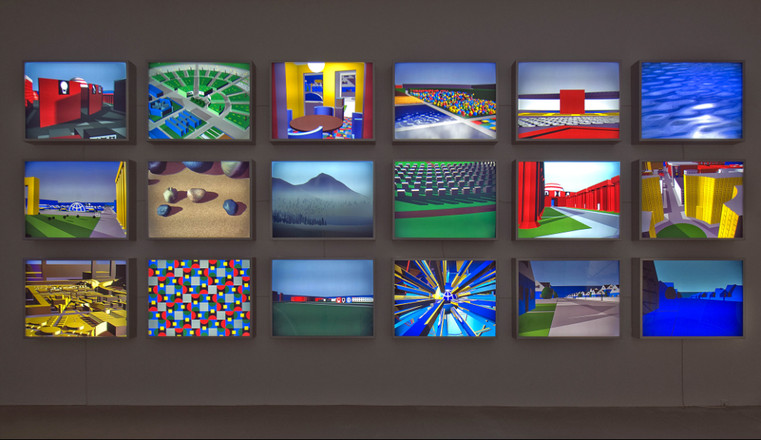
Matt Mullican, Untitled (Computer Project), 1989.
A couple of years later, Mullican ventured into a medical anatomy lab, where his various interactions wit the cadaver of an old man were recorded by a photographer. One of the resulting photographs, a portrait of the old man’s head, often figures alongside the portrait of a doll in what Mullican calls his “bulletin boards”—montages of photographs that the artist includes in most of his exhibitions. Is the doll, a living fictional person, more alive than the cadaver, a real dead one? In the mid-’70s Mullican began to use hypnosis to further test the boundaries between the real and the fictive, between the objective world and the subjective experience—to explore an entire house, for instance, of which he had previously visited only a single room. These journeys were taken, however, at the cost of some shock to the psychological and physiological systems—“I’m a fairly shy person,” notes Mullican. “When you’re under hypnosis, the crowd keeps pushing you to go down further”—and he quietly dropped the activity in the late ’70s.
Besides, other ideas that had long been in gestation were just beginning to reach maturity. Since student days a keeper of “charts”—rough sketches that attempted to describe the nature of different levels of reality in notational form—Mullican had been evolving the “model of cosmology” that was to become a cornerstone in his work. A drawing dating from 1974, Cosmology Proper, sketches out a cycle of life from birth to death, along with a handful of symbols that, in time, would form the basis for a full-scale, encyclopedic system.
Mullican instists on distinguishing his model from an actual cosmology, a metaphysical model. “It’s a chart,” he explains, “in a formal sense. My work may have to do with the loss of spiritual values, but I’m not involved with God in any intimate way, so I remain formal in my approach to the subject. I call it a model to suggest distance and manipulation.”
The concept has the internal logic of a computer model—dimensional and hierarchical, categorizing multiple orders of experience into a quasi-objective representation of the way in which the subjective mind constructs them into a cohesive whole. Flat areas of background color in the models assist in signifying the relationships among these various levels fo experience: red indicates subjectivity; black and white, language and systems of signs; yellow, “the world framed”—a code for all the arts; blue, “the world unframed”—the world of everyday objects and experiences; and green, the elements of the periodic table—the world that precedes or exists beyond the perception.
Mullican’s ever-growing vocabulary of stylized signs also functions as a codifier in this overall system, enabling him to envision nothing less than a symbolic representation of the construction of all human knowledge. Inspired by the international signage system that they resemble, these pictographs range from the banal to the exotic. While some—the rest room, the knife, the fork—are borrowed directly from that international language, others are recycled from old texts, encyclopedias, and popular mythology, or are derived from the particular site in which he works.
A project two years ago in Munster, West Germany, for example, found Mullican paving the courtyard of the city’s Chemistry Institute with 35 five-foot-square slabs of granite that had been etched with images combining his own lexicon and that of his putative audience of students. “I included a hamburger and soda,” he says, “alongside a picture of a scientific instrument, alongside a cosmological model, alongside a city plan.”

Matt Mullican, Dallas Project (Third Version), 1987. Installation view, Le Magasin, Grenoble, 1990.
The details of his systematic iconography of signs were years in the development, but Mullican had established a strong theoretical basis for his work by the late ’70s. He had also, on the strength of his performance work, gained recognition in the New York art world. Along with contemporaries Salle and Bleckner, Mullican was picked up by the dealer Mary Boone, who in 1980 offered him an exhibition. While his association with Boone was to last five years, Mullican recalls that he was “odd man out in the gallery. I was just starting to work with posters and banners, and it was pretty clear Boone would have a tough time selling them. But she encouraged me to do whatever I wanted, which was terrific. And she gave the work an acutely public image.” In a surely self-conscious and ironic awareness of this image, Mullican paired his own name and some weighty philosophical concepts on the posters of signs in his first exhibition at the gallery: “MULLICAN—GOD,” “MULLICAN—DEATH,” “MULLICAN—WORLD.” “The names,” he says, “represented my emergence into the public arena. I was especially interested in artists like Julian Schnabel and the way a name could become so important.”
Yet the public arena, for Mullican, proved to be something other than the established world of art collectors and museums. The poster and banners—unprecious, easily reproduceable mass communications media—suggested access to a general public that had no particularly commitment to or interest in art. New York dealer Michael Klein, who has represented Mullican’s work since 1985, encouraged this direction by actively searching for venues in which the artist could work without traditional gallery strictures. “If information was coming from the public,” says Klein, “it should go back to the public.”
For Mullican, the public forum proved important as another discovery of how context could inform the signs. “When I put an image on a flag,” he says, “I found it meant something very different than when I put it on a piece of paper,” citing the example of a 1986 installation at the Palais des Beaux-Arts in Brussels. There, his black-on-yellow images on huge banners hung over the building’s facade were intended to refer in his own code to language systems and the “world framed.” In fact, as black and yellow are Flemish national colors, the banners provoked a public outcry; they were construed as a political statement concerning then-current infighting among Belgian ethnic groups. “Their system” he notes laconically, “was much stronger in that context than mine.”
Mullican’s public art explores how a culture imparts meaning to the things with which it surrounds itself. His work “becomes architecture in an odd way,” he explains. “People don’t question its presence physically. When you etch in stone, people aren’t worried about the value of the object. They’re not worried about it being avant-garde or alien. They’re just looking at the picture and they might want to understand what’s going on.” He is fond of a story about an exhibition in Philadelphia that included one of his earliest rubbings, the four-panel Untitled (Big Chart) (1984), which maps out a sketch of his cosmology. A young man was overheard explaining it as the fall of Western man. “He was trying to decode it, and was in a sense philosophizing about the nature of pictures,” Mullican says. “He might have gotten the symbols all wrong, but he was talking about the relationship of pictures to the world.”
Mullican’s discovery of granite as a durable and unusual etching surface contributed to his growing recognition and access to choice public projects in the early ’80s. Moreover, the images in stone suggested ancient stone rubbings to the artist, who began to use Masonite-and-paper templates to make his own rubbings of signs. Mullican takes plaeasure in the idea that the medium has a history of 2,000 years as a form of printmaking, and also finds in rubbing a paradigm of the distance he has always maintained between subjective vision and objective reality: “The rubbing becomes an echo of the relief, the record of the creation of an artificial history.” Mullican records his signs on canvas in black oilstick against the backgrounds of cool, flat areas of color. Early works of this kind, such as Untitled (Big Chart), led to grand pieces like a 1986–87 commissioned work for the Dallas Museum of Art that comprised 52 adjacent panels; its scope comes close to fulfilling Mullican’s dream of an encyclopedic artwork that documents the history of the world, as he says, “from the big bang to the future of mankind.”

Matt Mullican, Untitled, 2017.
As a slow, labor-intensive equivalent of the visual process, the rubbings also reflect Mullican’s interest, from student days, in the way light constructs the images we “see.” The same is true of the computer-generated images in the project with which he is now involved. At its core is his current preoccupation with the “City,” a Borges-like model of human knowledge and experience that made its first notational appearance in the cosmology charts as early as 1979. “People were interested in the image from the start,” the artist points out. “They wanted to know what the City would look like, so it seemed appropriate that it should be described.” A substantial elaboration of the City appeared in a 1987 show at the Kuhlenschmidt/Simon gallery in Los Angeles, and was soon expanded to occupy a 20-panel section at the center of the Dallas project. And Mullican continues to explore its meaning and parameters in a variety of mediums, from a planar rendition in white porcelain to a three-dimensional model in Styrofoam at his Michael Klein gallery show last fall to a series of upcoming large-scale public commissions in L.A., New York, and Givors, France.
But it is a NYNEX-sponsored supercomputer project that affords him the power to conceptualize images and integrate them on an enormous scale—to create, in effect, his own enormous city—at John Whitney, Jr.’s Optomystic studio in Hollywood. Whitney’s brother, Mark, first spotted Mullican’s work at Kuhlenschmidt/Simon in 1987. “We were actively looking for an artist to work with,” explains John Whitney, “because we realized this was a way to expand our thinking about the way we had been using the computer.” The “Thinking Machine” (an innovative Connection Machine-2 computer designed by leading researchers in artificial intelligence at M.I.T.) is the most advanced imaging technology in existence. “We can take Matt’s work and describe the topology in three-dimensional mathematical form,” says Whitney. “The plan is to work together long enough to build from the smallest element to the largest. We can give this thing a scale that would be inconceivable without a computer.” The result, he says, “will be a massless, weightless, a city of ideas and icons, archetypes and relationships—a whole metamorphosis of morphology.”
It’s not only a matter of scale, then, but an expanded power to actually conceptualize the model. If the Dallas project, in its sheer length, allowed Mullican to extend his linear exploration of the City, the computer invites mind-boggling three-dimensional projections. “When you’re given any part of the City,” explains Mullican, “it’s going to change the way other parts look. When you look out from the blue area, for example—the level of the street and everyday experiences—all the other areas tend to look blue. So there is not one city, but five, because each area defines the others differently.”
Mullican stresses, however, that the project is still too young to predict what its final results might be. Even the scale remains undetermined—though the current projection is roughly two miles by four miles. The show at the Modern this summer will feature prints from screen images of parts of the City, exhibited in light boxes, along with a video monitor, related line drawings, and a poster blow-up of a City panorama.
At last report, the artist was back in New York, at work on a 12½-by-25-foot drawing of the City on his studio floor (in a scale of one inch to 65 feet). “It’s interesting,” he says, “because you have to be so clear. I’m laying out all the roads, all the buildings, and I want to get as much done as I can in the fastest way. Once I get the image into the memory, I’ll be able to feed off the computer more.” In the meantime, he says, he finds the hacker’s terminology compatible with his own. “I think of a cosmology as a machine, and the computer people talk about the ‘cosmology’ of the computer’s memory, and the ‘engine’ that generates its activity. I like that idea—an engine generating meaning.”
And the pressures and demands of the international art world? Will they allow him the time and leisure to explore the new medium? “I’m trying to space things out more,” says Mullican. “I have to challenge myself. You get known by a body of work, and people expect it of you. Then you feel a bit trapped, you get sucked in. . . . I’m terrified of that.” Yet he sees no end to the work he has to do. “People might know that I’m involved with a certain image, but they don’t necessarily understand all the applications of the image,” he says, adding, after a moment’s hesitation, “and that is after all my job, isn’t it? Finding out.”
A version of this story originally appeared in the Summer 1989 issue of ARTnews on page 142 under the title “Sign Language.”

